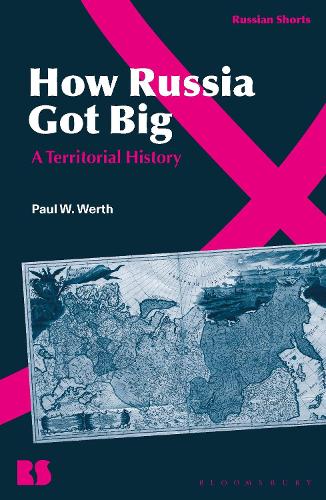
How Russia Got Big: A Territorial History
(Paperback)
Available Formats
Publishing Details
How Russia Got Big: A Territorial History
By (Author) Professor Paul W. Werth
Bloomsbury Publishing PLC
Bloomsbury Academic
16th October 2025
United Kingdom
Classifications
Tertiary Education
Non Fiction
General and world history
Colonialism and imperialism
Physical Properties
Paperback
184
Width 128mm, Height 196mm, Spine 14mm
200g
Description
How Russia Got Big accounts for Russias changing physical scope over some seven centuries.
Beginning with the small principality of Moscow in the early 14th century, the book recounts the construction of the worlds largest country in the form of the Russian Empire and the USSR, as well as its collapse and territorial restriction on two separate occasions. Integrating topics of geography, diplomacy, migration, and environment, and supported by 15 helpful maps, Paul W. Werth ranges across three continents and accordingly asserts a significant role for Russia in world history. Werth contemplates different ways of conceptualizing territorial possession and related understandings of sovereignty, authority, and belonging. The result is a grand story from a birds-eye view, one that revels in details connected with territorial oddities such as exclaves, diplomatic compounds, and spheres of influence and which is as concise as it is wholly original.
Author Bio
Paul W. Werth is Professor of History and Department Chair at University of Nevada, Las Vegas, USA. Since 2009, he has been serving as Editor of Kritika: Explorations in Russian and Eurasian History, a leading international journal. His books include At the Margins of Orthodoxy: Mission, Governance, and Confessional Politics in Russias Volga-Kama Region (2002), Orthodoxy, Non-Orthodoxy, Heterodoxy: Sketches on the History of Religious Diversity in the Russian Empire (2012) [in Russian], and The Tsar's Foreign Faiths: Toleration and the Fate of Religious Freedom in Imperial Russia (2014).
